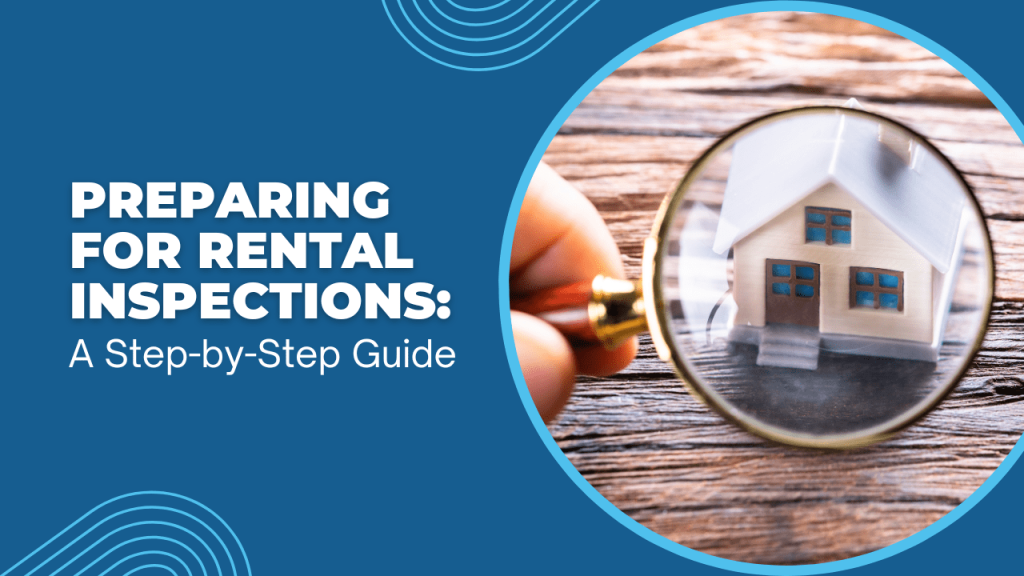
The importance of rental inspections is universally understood among real estate investors and rental property owners. You need to get eyes on your property so that you can be sure it’s in good condition. Inspections are important for noting and scheduling necessary repairs, for planning improvements and renovations, and for determining whether your tenants created any damage to your property for which you can charge their security deposit.
Understanding the importance of inspections and conducting those inspections are two separate things. If you’ve struggled to complete a comprehensive inspection or if you’re not sure where to start, we have some good advice for you today. As professional property managers in Los Angeles County, we have worked with many owners who need some guidance with their inspections, and we’re happy to provide it. Here is our step-by-step guide to preparing for rental inspections at your LA investment property.
Steps to Inspection Preparation at Your LA Rental Property
Inspections before, during, and after a tenancy will help ensure that your rental property is well-maintained and that tenants are adhering to their lease agreements. We will talk specifically about the move-in and the move-out inspections that you’ll need to conduct, but this step-by-step guide can be used when preparing for any inspection and for any reason.
Properly preparing for an inspection can save time and prevent potential issues from escalating. Here’s what to do.
Step 1: Establish the Purpose of Each Inspection
Before conducting an inspection, it’s essential to understand why you’re going into the home, and why this particular inspection is necessary. Maybe it’s just a routine maintenance walk-through. Maybe you drove by the property and you noticed a lot of cars outside of the property when only one tenant is in place and you want to make sure there aren’t any unauthorized people living there. Some of the reasons property owners will conduct regular inspections include ensuring the property meets all safety standards and local habitability requirements. You might want to identify maintenance issues that need attention or evaluate an appliance you’re thinking about replacing. You might want to assess tenant compliance with the lease terms. Maybe you’re documenting the property’s condition for future reference.
It could be a move-in inspection, and it could be a move-out inspection in which you need to make decisions about the security deposit and the turnover process.
The reason for your inspection will inform how you prepare for it and conduct it, so be sure about the scope and the reasoning. This will also help you communicate with tenants when you’re scheduling your walk-through.
Step 2: Know Your Legal Obligations
California requires that you offer your tenants a pre-move out inspection two weeks before they leave your property. This is intended to show them where they might face security deposit deductions. It also gives you a good opportunity to plan on how you’ll turn the property over and prepare it for a new tenant.
Your tenants don’t have to agree to it. But you do have to offer it.
It’s important to be familiar with the law any time you plan on inspecting or even entering the property while tenants are in place. You’ll want to provide tenants with adequate notice before an inspection (usually 24-48 hours). You’ll also want to conduct your inspections at reasonable times and respect the privacy of your residents by not inspecting too frequently. There’s no reason to show up at the property every week, expecting to take a look around.
Step 3: Create a Checklist
Create a detailed inspection checklist to ensure you don’t miss anything while you’re inside of the property. Your checklist should include items such as:
- Exterior and structural integrity (look at the roof, gutters, windows, doors)
- Interior condition (walls, ceilings, floors, lighting)
- Appliances and fixtures (stoves, refrigerators, plumbing, HVAC systems)
- Safety features (smoke detectors, carbon monoxide detectors, fire extinguishers)
- Signs of tenant damage or neglect
That’s not a comprehensive checklist. You’ll want to take a look at the sinks and the toilets and you’ll want to make sure there’s no sign of pest infestations or trash being left out. These are some examples of what you’ll want to include on your checklist to ensure you’re not forgetting anything.
Step 4: Communicate with Tenants
Clear communication with your tenants is key to a smooth inspection process. Send them a polite reminder in advance of your inspection, detailing the date and time that you’ll be there, the area of focus or reason for the inspection, and any preparations they should make ahead of your arrival. This could mean cleaning, locking up pets, or allowing you access to specific areas. If you’re inspecting the plumbing, for example, it’s reasonable to ask them to remove any items that are stored underneath sinks.
Step 5: Inspect the Property Thoroughly
On the pre-arranged inspection date, take your time walking through the property. Pay attention to the cleanliness and general upkeep. Look for any signs of unauthorized alterations or misuse. You’ll also want to note any potential safety hazards that need to be addressed with your resident.
Document your findings with photos or notes to keep a record of the property’s condition. As your property managers, we provide a full inspection report that includes photos and detailed descriptions.
Step 6: Address Any Issues Promptly
If you identify any issues or areas of concern during the inspection, address them promptly. This may involve scheduling repairs or maintenance with your vendors or discussing lease violations with tenants and agreeing on corrective measures.
Step 7: Follow Up with Tenants
After the inspection, follow up with your tenants. Provide them with a summary of your findings and any actions needed on their part. Maintaining open communication helps build a positive landlord-tenant relationship and ensures ongoing compliance.
Move-In and Move-Out Inspections are Special
There are the general inspections that you’ll conduct routinely throughout tenancies, and then there are the move-in and move-out inspections that come before and after a tenancy. These are special and they serve a few essential purposes:
- Documentation. Provide a clear record of the property’s condition at the start and end of the lease.
- Dispute Resolution. Minimize disagreements over security deposits by having documented proof of any damages or changes.
- Maintenance Planning. Identify necessary repairs or updates promptly to keep your property in top shape.
Many of the steps you’ll take while preparing for these inspections are the same steps that you’d take before any inspection. For example, you’ll create a detailed inspection checklist. You’ll create an inspection report.
The move-in inspection allows you to document the condition of your property before a tenant takes possession of it. This inspection also gives you one final opportunity to make repairs or improvements that will be necessary in order for your tenant to have
A comprehensive checklist is your best tool for a successful move-in inspection. Include every room, fixture, and appliance, noting their condition and any pre-existing damage. This checklist will serve as the baseline for future comparisons. Supplement your checklist with dated photos or videos of each room and any notable issues. This visual evidence can be invaluable in resolving potential disputes.
After you’ve completed the inspection, leave the inspection report you create with your new residents for a few days after they move in. This gives them an opportunity to note anything that they’d like to have documented. You’ll both sign the inspection report, thus agreeing to the property condition before the tenancy.
As we mentioned, you’ll need to offer a pre-move out inspection to your tenants after they give you their notice to vacate. Then, you’ll conduct a move-out inspection after your tenants have left. This allows you to compare the condition now to the condition before they moved in. So you’ll want to begin by reviewing the move-in report. This will help you focus on any changes or new issues that have arisen during the tenancy.
Using the move-in report as your guide, conduct a detailed walk-through of the property. Note any differences and categorize them as normal wear and tear or damage. Just as with the move-in inspection, take photos or videos to document the property’s condition upon move-out. This documentation will support any deductions from the security deposit for repairs.
After completing the inspection, update the report with your findings. Discuss any deductions from the security deposit with the tenant, providing them with a copy of the final report. When you return the security deposit, you’ll want to include an itemized list of deductions, noting how much was withheld and why.
Conducting move-in and move-out inspections is a critical part of property management for any landlord in LA County. By following these steps and maintaining clear communication with tenants, you can protect your investment, reduce disputes, and ensure a smooth transition between tenancies.
 Regular rental property inspections are an integral part of renting out a home. By following this step-by-step guide, you can conduct thorough inspections that protect your LA investment, ensure tenant compliance, and foster a well-maintained living environment.
Regular rental property inspections are an integral part of renting out a home. By following this step-by-step guide, you can conduct thorough inspections that protect your LA investment, ensure tenant compliance, and foster a well-maintained living environment.
We’d be happy to discuss this further, and to help with the management of your investments. Contact us at El Camino Property Management.
Please note, this information is deemed reliable, but not guaranteed. Please consult appropriate professionals for specific situations.



